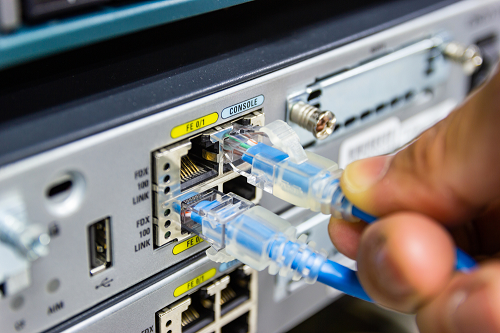This might or might not come as a shock, but over 90% of American homes have three or more digital devices accessing the internet, and nearly half have five or more. Computers, game systems, mobile devices, and printers are all connected to the internet and each other.
Home networks can be wireless or wired. Wireless is popular but wired connections are faster, more secure, and more reliable. Many people choose a combination, using wired connections for streaming entertainment and other applications where consistent internet access is desired.
What is Cat5 Cabling?

The #1 choice for many years, Cat5 cabling for home networks has the advantage of being the least expensive option for wired connections. It also:
- Offers fairly high rates of transfer when compared to personal networks and older type of cabling. It can also transfer up to four signals at once.
- Is versatile, using a solid conductor form for connecting the central panel to wall sockets and a flexible stranded version that connects equipment to the socket.
Cat5 cabling does have some downsides:
- Data transfer is adequate but limited on its top end. Handling tops out at 100Mbps per second which can affect how newer appliances like smart TVs perform.
- It’s highly sensitive to interference with its effectiveness reduced by electrostatic disturbances from other devices in the home such as mobile phones, computer and television wireless signals, and microwaves.
It’s also susceptible to what’s known as “cross-talk,” which is when the cabling picks up interference from other Cat5 cables it’s combined with. Data transfers, signal strength, and transfer speeds can all be affected by cross-talk. Cat5e (enhanced) cables can reduce cross-talk while offering a higher speed, up to a gigabit, or 1000Mbps.
Cat5 Cabling or Cat6?
You may have heard that the right cable is the one that gives you the most range, but you also need to consider the speed of your network’s performance. That’s where Cat6 cabling outdoes Cat5 cabling just about every time.
These top-of-the-line cables have speeds up to 10Gbps and 250Mhz of bandwidth, more than double that offered by Cat5 cabling. Cat6 also has an internal separator that reduces interference and cross-talk.
Choosing between the two depends on your needs and budget. Going with Cat6 may be more expensive upfront, but you’ll also help future-proof your home network against inevitable technology advancements. That said, Cat5 is still perfectly suited for most home networking needs.
Call Now for Home Network Installation
A home network delivers faster internet speeds and more reliable connections and makes your home come alive with the latest in technology. For more information on the pros and cons of Cat5 cabling or to get started on building a home network of your own, contact Spyrka Electric by phone, email, or online today. We’re ready to meet all your home networking needs!

